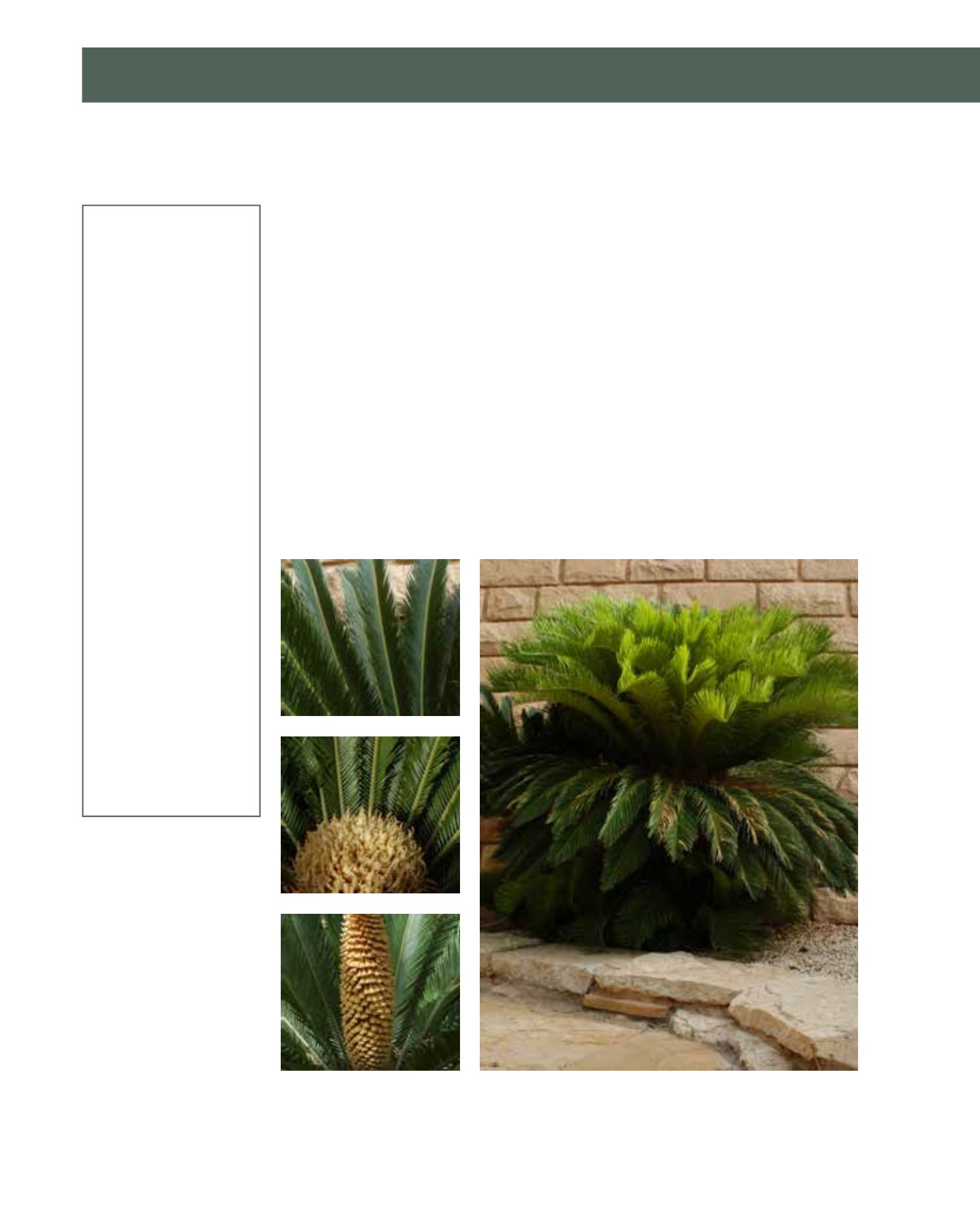

GENERAL
Origin
:
Mediterranean,
sub-tropical,
tropical
Vigour
:
very slow-
growing
Humidity
:
semi-humid, very
humid, extremely
humid
Propagation :
sowing and
pricking out
Maintenance :
low
CONDITIONS
Urban climate :
resistant
Dessication :
vulnerable
Stagnant water :
vulnerable
Irrigation
:
medium
Salinity/ppm :
moderate (1200
ppm)
Hardiness
:
-9°C
SHAPE
Type
:
shrub, tree
Height
:
2 m-3 m
Spread
:
1.5 m-3.5 m
Foliage
:
evergreen
FLOWER
Colour
:
deep yellow
Size
:
30 cm
Period
:
June - August
FRUIT
Type of fruit :
drupe (leathery/
fibrous)
Fruit size
:
4 cm
Toxicity
:
edible when
processed,
poisonous, fruit,
shoot
Fern or Sago Palm is the common name for this plant, which many believe to be a palm tree,
because of its fronds. C. revoluta belongs to a special plant family called cycads, which produce
cones instead of flowers. It is native to southern Japan. There are some excellent specimens at Kasr
Tuwaiq in the Diplomatic Quarter. It eventually grows to the proportions of a small tree, reaching
a height of 2 to 3 metres. The Cycas reaches maturity at the age of 100, but it is very slow-growing
and a specimen at this age will have a trunk of 7 metres. The evergreen, leathery, long leaves are
in a very symmetrical order at top of the stem. The plant is dioecious: the male plant develops an
impressive cone for pollen production, and the female plants bear groups of nut-like seeds that
can be used for propagation, which can also be carried out by removing the basal offsets. Cycas
prefers sandy to clayey soil with some humus content. It does not like salinity and requires ade-
quate irrigation and a minimum of air humidity. The Sago will grow well in the shade of trees
and is best planted to receive morning sun. Pruning is not required. C. revoluta is a very attrac-
tive plant, because of its dark-green leaves and regular and symmetrical growth. It survives the
intense, dry heat of Arriyadh, and sometimes direct sun, remarkably well, giving a lush, tropical
impression. Attractive planting schemes can be created with Cycas as accent or specimen plants
or in groups in parks, gardens or pedestrian precincts.
123
Cycas revoluta,
Cycadaceae
Cycad,
Fern Palm, Sago Palm
















